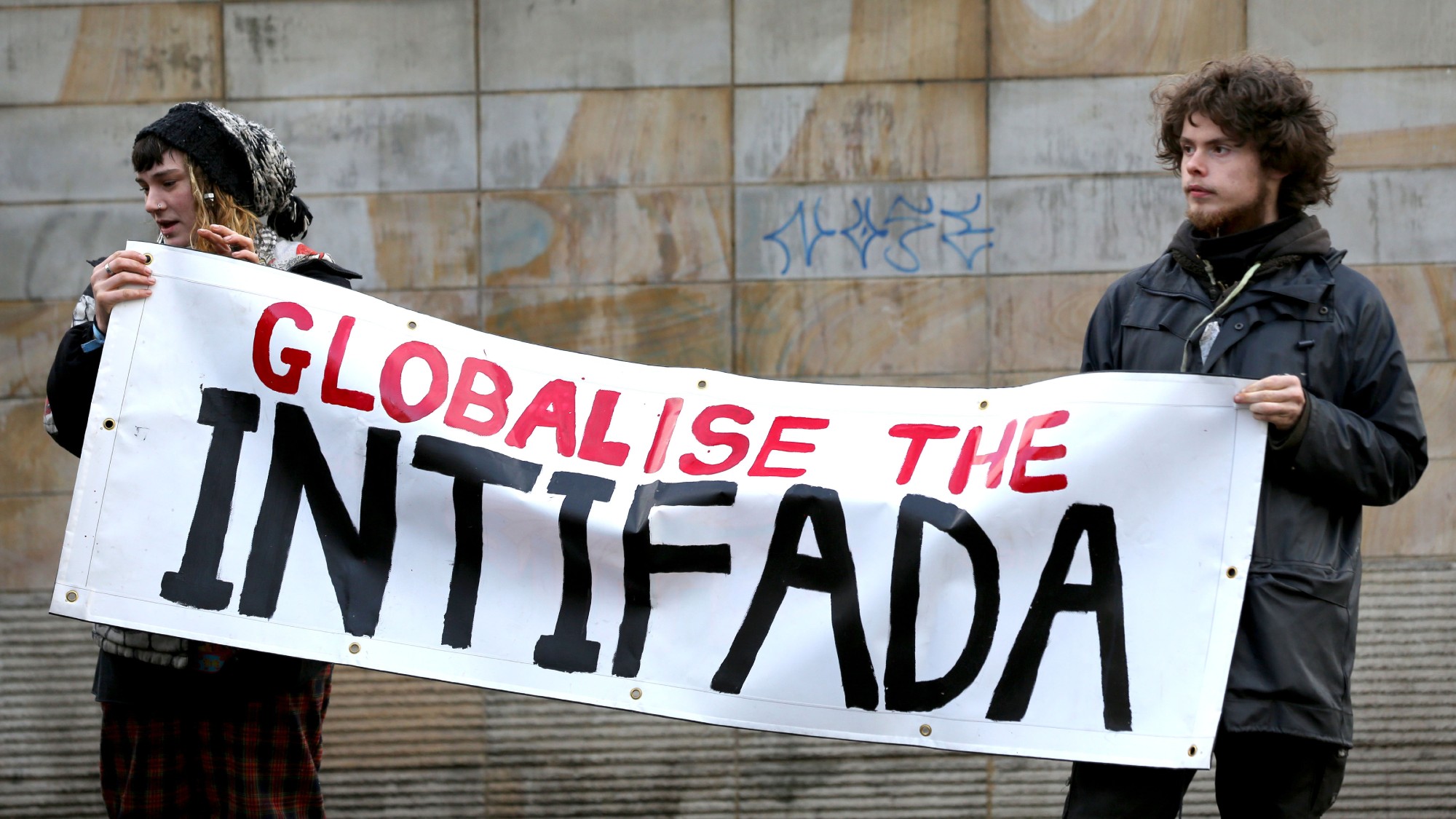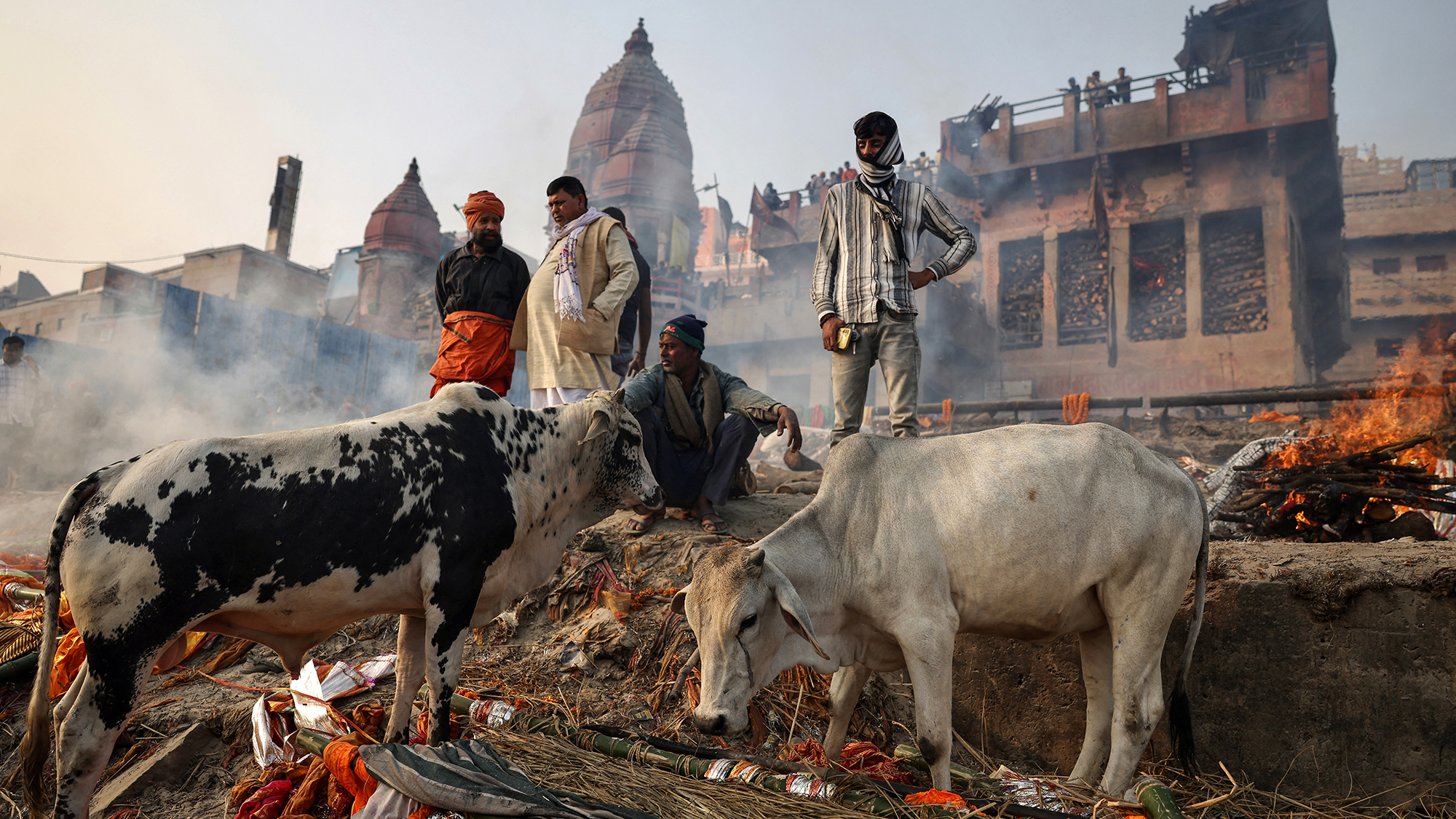Chernobyl forest fire: is the public at risk?
Atmospheric radiation spikes in exclusion zone following suspected arson blaze

Massive forest fires in the Chernobyl exclusion zone have sent atmospheric radiation soaring to 17 times higher than normal levels, Ukrainian officials have warned.
Two blazes broke out on Saturday near the site of the 1986 nuclear power station disaster, with firefighters still battling to contain the larger of the fires on Monday.
“There is bad news,” wrote Yegor Firsov, head of Ukraine’s state ecological inspection service, in a Facebook post. “At the centre of the fire, radiation levels are high.”
The Week
Escape your echo chamber. Get the facts behind the news, plus analysis from multiple perspectives.

Sign up for The Week's Free Newsletters
From our morning news briefing to a weekly Good News Newsletter, get the best of The Week delivered directly to your inbox.
From our morning news briefing to a weekly Good News Newsletter, get the best of The Week delivered directly to your inbox.
What happened?
The two fires, which covered around 12 acres and 50 acres respectively, began on Saturday afternoon near the village of Vladimirovka, within the uninhabited Chernobyl exclusion zone, CNN reports.
In a video alongside his Facebook post, ecological inspection chief Firsov is seen holding up a Geiger counter showing a reading of 2.3 - while “the norm is 0.14”, he explains of the measurements, which refer to the microsievert per hour (μSv/h) reading.
The maximum allowable amount of natural background radiation is 0.5 μSv/h, according to Ukraine’s emergency services.
A free daily email with the biggest news stories of the day – and the best features from TheWeek.com
Prague-based news organisation Radio Free Europe/Radio Liberty (RFERL) reports that more than 130 firefighters, three aircraft, and 21 vehicles were deployed on Saturday to battle the larger fire, with a further 14 firefighters tackling the smaller blaze.
The 1,000-square-mile exclusion zone has been overtaken by nature since residents were evacuted following the Chernobyl Nuclear Power Plant meltdown, and “forest fires are common”, adds news site Insider.
However, the authorities believe that the latest fires were caused by arson.
So how did the fire start?
Police in capital Kiev - around 60 miles south of Chernobyl - say they have identified a man who they believe started the fires.
In a statement, the city’s force said the unnamed suspect is a 27-year-old resident of the nearby village of Rahivka. The man, who has not been officially charged as yet, reportedly told investigators that he had set some rubbish and grass on fire “for fun”.
–––––––––––––––––––––––––––––––For a round-up of the most important stories from around the world - and a concise, refreshing and balanced take on the week’s news agenda - try The Week magazine. Start your trial subscription today –––––––––––––––––––––––––––––––
Ecological inspection boss Firsov claimed in his Facebook post that citizens regularly set fire to grass during the spring and autumn seasons - a violation that carries a 175 UAH (£5.20) penalty.
Firsov has called on the Ukraine parliament to “significantly raise penalties” in order to prevent further wildfires.
“The problem of setting fires to grass by careless citizens in spring and autumn has long been a very acute problem for us,” he wrote. “Every year we see the same picture - fields, reeds, forests burn in all regions.”
However, police investigating last weekend’s fires “have launched a probe into the destruction of forestry, an offence which can be punished with hefty fines or imprisonment for up to five years”, RFERL reports.
Is the public in danger?
Despite the alarming peaks in radiation recorded at the centre of the fires, Kiev and the surrounding area does not appear the be affected. .
A statement released by Ukraine’s Emergency Preparedness and Radiation Monitoring Department on Sunday said: “It can be argued that as of 5PM on 5 April, a fire in the Exclusion Zone and unconditional (compulsory) eviction had no effect on the radiation situation in Kyiv and the suburbs.”
“You don’t have to be afraid of opening your windows and airing out your home,” added Firsov in a Facebook post about the results of the radiation tests.
-
 What is the global intifada?
What is the global intifada?The Explainer Police have arrested two people over controversial ‘globalise the intifada’ chants
-
 The Week Unwrapped: What’s the cost of PFAs?
The Week Unwrapped: What’s the cost of PFAs?Podcast Plus why is George Osborne joining OpenAI? And has universal basic income finally come of age?
-
 The week’s best photos
The week’s best photosIn Pictures A dervish dance off, a frosty forest, and more
-
 How Bulgaria’s government fell amid mass protests
How Bulgaria’s government fell amid mass protestsThe Explainer The country’s prime minister resigned as part of the fallout
-
 Femicide: Italy’s newest crime
Femicide: Italy’s newest crimeThe Explainer Landmark law to criminalise murder of a woman as an ‘act of hatred’ or ‘subjugation’ but critics say Italy is still deeply patriarchal
-
 Brazil’s Bolsonaro behind bars after appeals run out
Brazil’s Bolsonaro behind bars after appeals run outSpeed Read He will serve 27 years in prison
-
 Americans traveling abroad face renewed criticism in the Trump era
Americans traveling abroad face renewed criticism in the Trump eraThe Explainer Some of Trump’s behavior has Americans being questioned
-
 Nigeria confused by Trump invasion threat
Nigeria confused by Trump invasion threatSpeed Read Trump has claimed the country is persecuting Christians
-
 Sanae Takaichi: Japan’s Iron Lady set to be the country’s first woman prime minister
Sanae Takaichi: Japan’s Iron Lady set to be the country’s first woman prime ministerIn the Spotlight Takaichi is a member of Japan’s conservative, nationalist Liberal Democratic Party
-
 Russia is ‘helping China’ prepare for an invasion of Taiwan
Russia is ‘helping China’ prepare for an invasion of TaiwanIn the Spotlight Russia is reportedly allowing China access to military training
-
 Interpol arrests hundreds in Africa-wide sextortion crackdown
Interpol arrests hundreds in Africa-wide sextortion crackdownIN THE SPOTLIGHT A series of stings disrupts major cybercrime operations as law enforcement estimates millions in losses from schemes designed to prey on lonely users